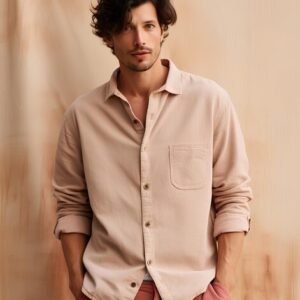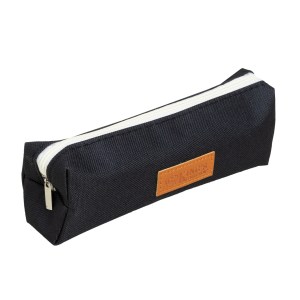In an era where minimalism and intentional living are becoming increasingly popular, building a wardrobe with just the essentials is more than just a fashion choice—it’s a lifestyle shift. The benefits are plenty: less clutter, faster decisions in the morning, higher-quality Essentials Hoodies clothing, and even cost savings in the long run. Whether you’re aiming for a minimalist closet or simply want a streamlined selection of go-to outfits, this guide will help you build a functional, stylish wardrobe based on timeless essentials.
1. Understand Your Lifestyle
Before diving into clothing choices, take a step back and assess your daily life. Are you working in a corporate office or mostly at home? Do you attend formal events, go out on weekends, or spend a lot of time outdoors?
Break down your week into percentages:
-
Work: 60%
-
Casual/Errands: 30%
-
Special Events: 10%
These numbers will help you decide how many items you need for each type of occasion. For example, if you work remotely, you don’t need a dozen blazers and dress pants. If you’re frequently active, invest more in high-quality leisurewear.
2. Choose a Cohesive Color Palette
A limited wardrobe works best when everything goes together. Choose a base palette of neutral colors—black, white, navy, gray, beige, or olive—that match easily. Then, add 1–2 accent colors that reflect your personality. For example:
-
Base: White, black, gray
-
Accent: Burgundy, forest green
This palette makes mixing and matching easier and allows each piece to be more versatile.
3. Invest in Core Pieces
Here are the must-have wardrobe essentials that form the backbone of a minimalist yet functional closet. These pieces are versatile, timeless, and work across multiple settings.
Tops
-
2–3 Basic T-Shirts (white, black, or gray) – Great for layering or wearing solo.
-
1–2 Button-Down Shirts – Perfect for business-casual or dressing up.
-
1–2 Casual Blouses or Knit Tops – For variety and feminine style.
-
1 Sweater or Cardigan – Neutral and good quality for layering in cooler months.
Bottoms
-
1–2 Pairs of Jeans – Choose a dark wash for versatility.
-
1 Pair of Trousers or Chinos – For work or smart-casual occasions.
-
1 Pair of Shorts or Skirt – Based on your preference and climate.
Outerwear
-
1 Tailored Blazer – Instantly elevates any outfit.
-
1 Casual Jacket (e.g., denim, utility, or leather) – For off-duty days.
-
1 Weather-Appropriate Coat – Choose one that suits your climate (trench, wool, or puffer).
Dresses (if applicable)
-
1 Casual Day Dress – Can be dressed up or down.
-
1 “Little Black Dress” – A timeless option for events or dinners.
Shoes
-
1 Pair of Casual Sneakers – For comfort and everyday wear.
-
1 Pair of Flats or Loafers – For polished yet comfortable style.
-
1 Pair of Dress Shoes or Boots – Depending on season and occasion.
Accessories
-
1 Neutral Belt
-
1 Quality Bag (crossbody or tote)
-
Minimal Jewelry – Simple studs or a watch add polish without clutter.
4. Stick to the Rule of Three
Before adding a new piece to your wardrobe, ask yourself:
-
Can I wear this with at least three different outfits?
-
Will I wear this at least once a week or month?
-
Does this fit my lifestyle and personal style?
If it doesn’t check at least two of the three, reconsider the purchase. This keeps your wardrobe intentional and practical.
5. Prioritize Fit and Fabric
Essentials should fit well and feel good. Focus on garments that flatter your body type and are comfortable to wear. When possible, choose natural fabrics like cotton, linen, or wool, as they are more breathable and durable than synthetic materials. A perfectly fitted white tee will always look better than a trendy item that doesn’t suit you.
6. Maintain and Rotate Seasonally
Even a minimalist wardrobe benefits from seasonal rotation. Store off-season items elsewhere to keep your closet tidy and reduce decision fatigue. At the beginning of each season, review your wardrobe:
-
Is anything worn out?
-
Do I still love this piece?
-
Can something be tailored or repaired instead of replaced?
Maintenance—like ironing, folding, and cleaning—keeps your essentials looking their best longer.
7. Embrace Repetition
One of the key mindset shifts in essential dressing is accepting that outfit repetition is normal and even stylish. Icons like Steve Jobs, Barack Obama, and capsule wardrobe influencers often repeat outfits. Why? Because a well-chosen outfit works every time.
Having a signature style also helps others recognize your taste. Whether it’s a crisp white shirt and jeans or a black dress with flats, consistency can be chic.
8. Avoid Trends, Embrace Timelessness
Trendy items quickly go out of style and can clutter a Essentials T-Shirt minimalist wardrobe. Focus on classic silhouettes and patterns—striped tops, solid colors, tailored fits. You can always inject personality through accessories like scarves, statement earrings, or a bold lipstick without needing to overhaul your closet.
Final Thoughts
Building a wardrobe with just the essentials isn’t about deprivation—it’s about clarity and confidence. With fewer clothes, you gain more peace of mind, more space, and more time. You start dressing with purpose, not impulse. Every piece serves you, not the other way around.The key is intentionality: choosing items that fit, flatter, and function well in your everyday life. Once your essentials are in place, getting dressed becomes not just simpler, but more satisfying.




